Latest News
Behind The Scenes: The Bridge at Sunnybrow (2)
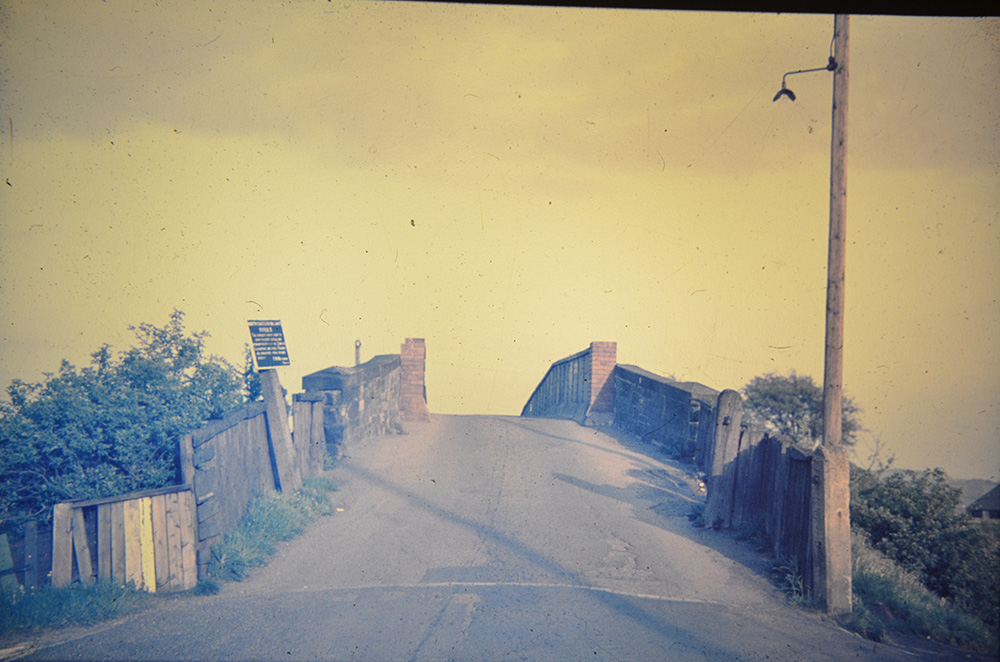
Cornish occasionally visited other villages in County Durham as well as places of interest across the region. The Pit Road theme was interpreted in several locations and the huge number of collieries provided other opportunities to develop this iconic theme which impacted the lives of thousands of other miners and their families.
Unable and unwilling to learn to drive, many places in the county would have been inaccessible to Cornish had it not been for his good friend Jack Savage who drove him in his Morris Minor to a number of villages and collieries.
In October 2011, Jack Savage’s daughter, Anne Wood CBE (creator of The Teletubbies and a Children’s TV producer) featured on BBC Radio 4, Desert Island Discs. During the interview, she spoke with warmth and affection about her family roots in Spennymoor and the influence on her life of Norman Cornish MBE 1919-2014.
Sunnybrow was a small colliery near Hunwick in the Wear Valley. The railway line finally closed in the 60s and this bridge was demolished. Originally it was the entrance to the village.
In his own words:
One wonders with the passing of time, when no present-day type pitheads actually exist, if pictures of them might one day be thought of as picturesque and as socially significant as old windmill pictures. They are both dominant shapes in the skyline; they both make big angular shapes against the sky; they both have big revolving parts. Also they both of them tend to have workers’ houses built around them.
The Bridge at Sunnybrow is featured in the book, Behind The Scenes: The Norman Cornish Sketchbooks, in the chapter devoted to Mining Scenes. The other chapters show the development of his work in Street Scenes, Bar Scenes and Observations of People. Copies may be purchased by visiting www.normancornish.com
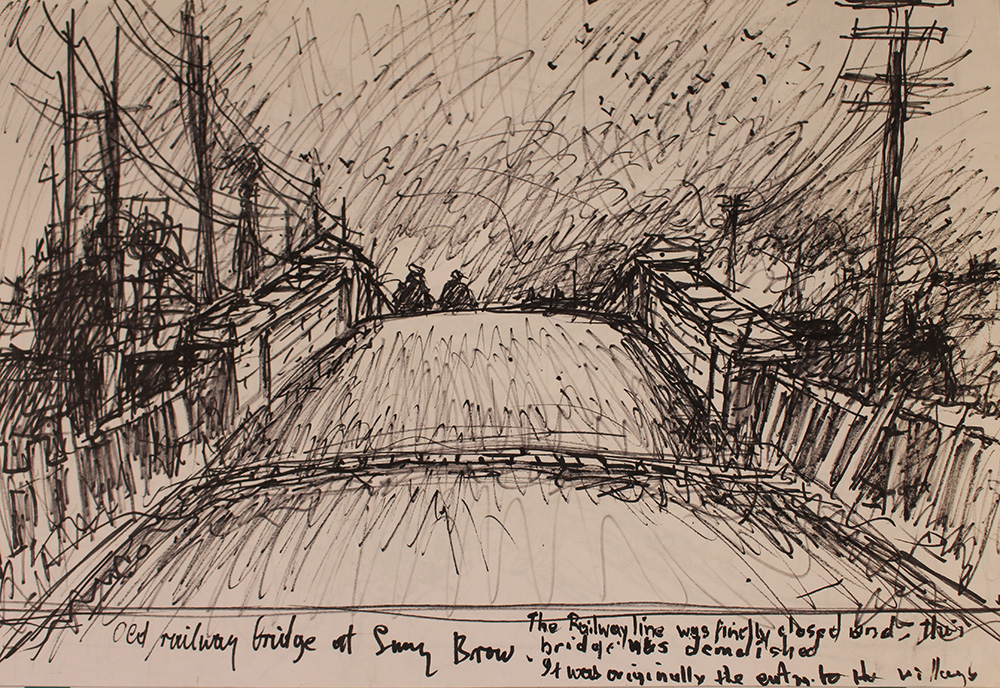
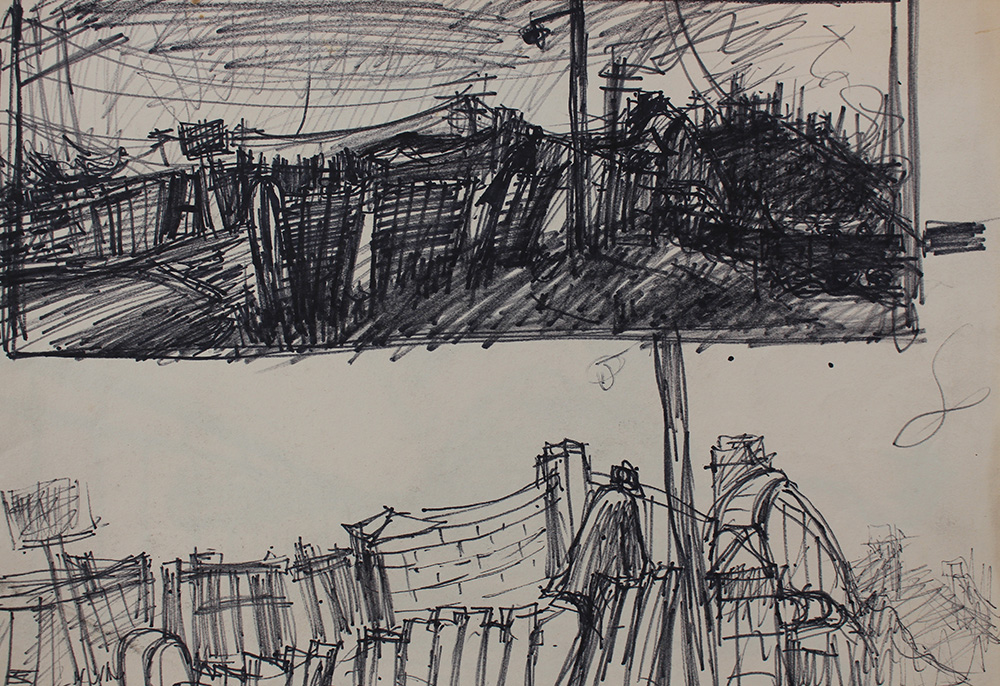
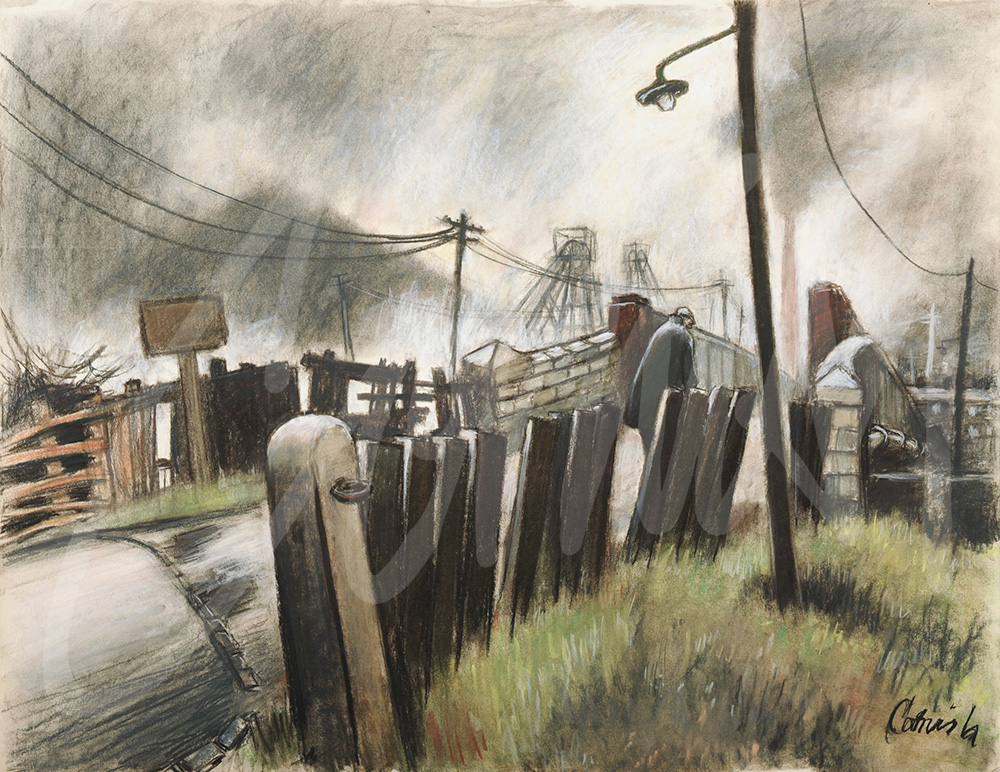
The Crowded Bar
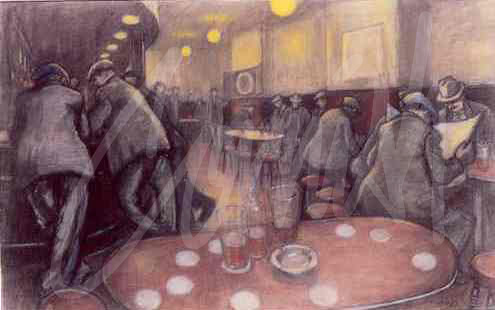
The Crowded Bar was discovered in February 2014, a canvas rolled up, at the back of a wardrobe in Whitworth Terrace at Spennymoor. Norman and Sarah Cornish had transferred to residential care and tidying the house revealed three previously unseen canvasses.
Cornish returned to the theme of the pub throughout his career. Bar scenes with individual character drawings, men playing dominoes, convivial conversations, and drawings of darts players. He also made detailed drawings of the beer pumps, furnishings, pint glasses and posters to ensure accuracy in his work. These features sometimes appear as individual component pictures because of their own special qualities and occasionally they are brought together in large composite paintings. Most of Cornish’s larger works involving many characters are constructed in this manner.
The Man at Bar with Dog illustrates the development of what appears to be a simple idea but one which becomes part of an evolving series. The true significance emerges when the series is considered as a continuum of development as individual characters may be tracked through various interpretations. The initial idea may have been drawn insitu but then ‘worked up’ towards a perfect composition. The Crowded Bar is a classic example of this approach.
In his own words:
About 40 years ago I would visit a great many pubs as they were marvellous places to practice drawing. I remember that in this particular scene, I must have made many drawings. I liked the attitude of the figures and also the big round lights. I remember sitting on a seat and surveying this scene. I have tried to paint it just as it was. I was fascinated by the men standing at the bar drinking and talking, or sitting playing dominoes.
The large oil paintings such as The Crowded Bar, have carefully constructed compositions’ incorporating characters and details from his extensive collection of sketchbooks. These drawings enable Cornish to create informal conversation pieces where a group of people appear to be interacting naturally.
The subject of Bar Scenes is covered in detail within Behind The Scenes: The Norman Cornish Sketchbooks, including a number of previously unseen preparatory drawings and sketches . Reference to this subject is also covered in two of the four essays by distinguished authors and historians Dr. Keith Wilson, Dr. Robert McManners and Gillian Wales (Cornish’s Biographers).
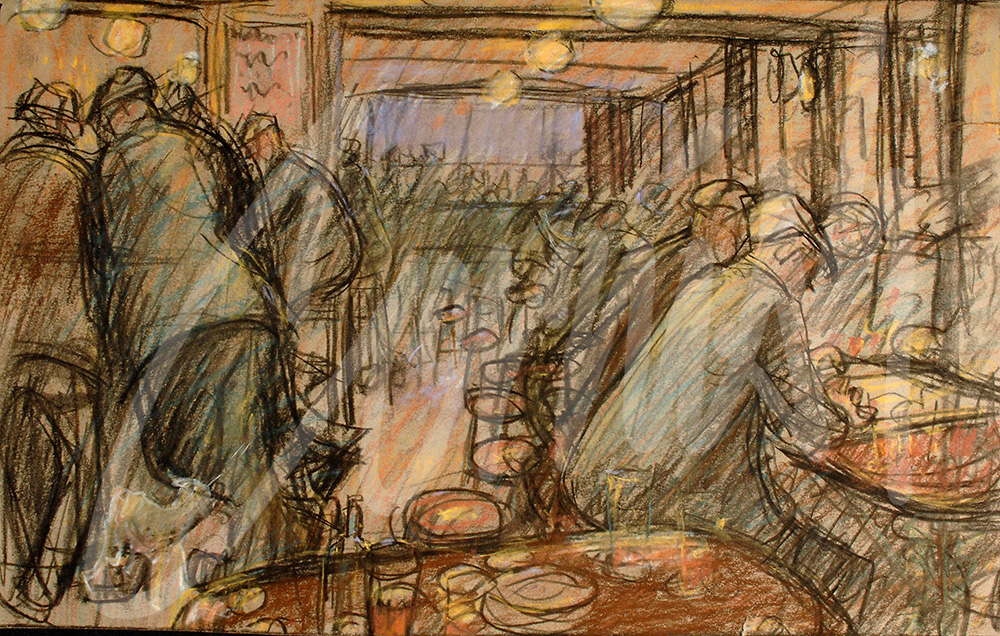
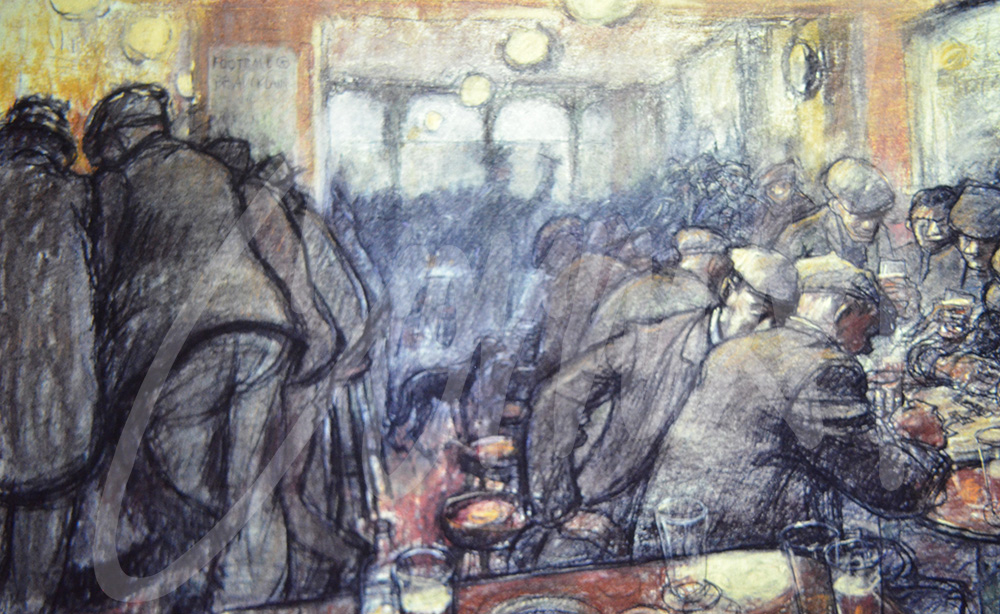
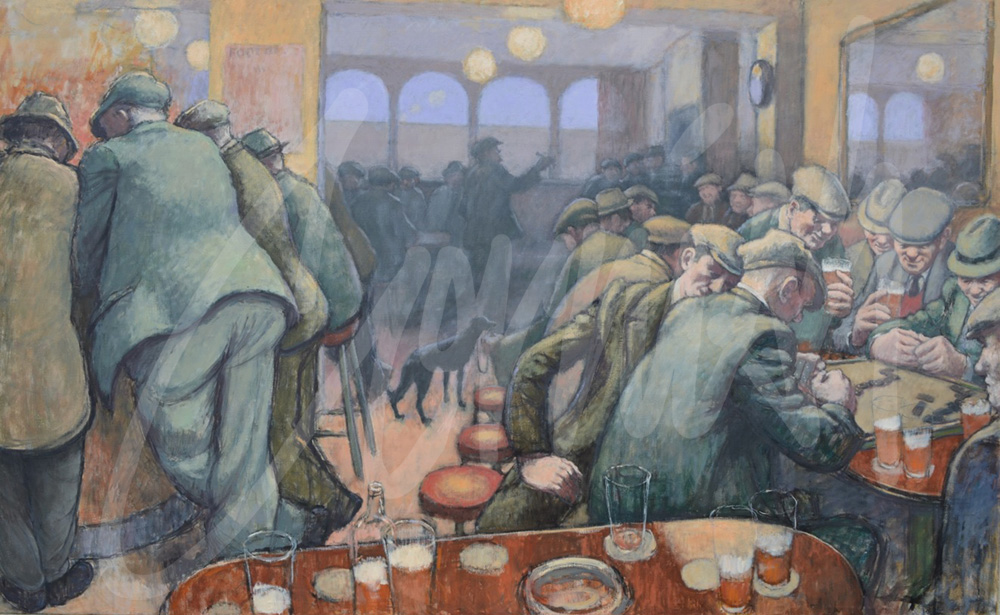
The Pony Putter
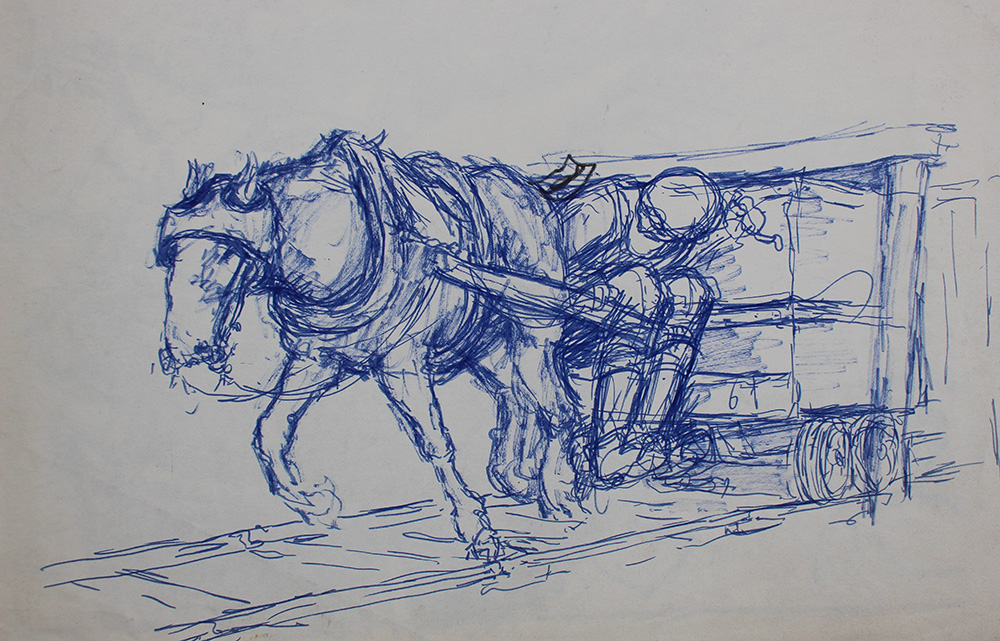
Cornish started work on Boxing Day 1933 aged 14 years. The landscape was dominated by coal mines in every direction and ‘The Times’ newspaper referred to County Durham as ‘little more than one huge colliery.’
In one sense, although denied the opportunity of continuing education, he was fortunate to gain work in a viable pit at a time when unemployment in the area reached 27% of the workforce. While the Dean and Chapter Colliery had no ‘disasters’ (officially five or more killed together, by gas or explosion) the records of 177 fatalities meant that the mine was referred to as ‘the Butchers Shop.’ This was an ominous title for the 2,135 men working underground. A few years after the young Cornish started work, over 3,000 tons of coal were being produced each day with two thirds of it hand hewn.
His first job when he was set on (a local term meaning to start work) was as a datal lad, paid at a daily rate, employed as a Pony Putter- sitting low on the limbers (wooden shafts connecting the pit pony to the coal tub) to avoid decapitation.
Cornish lived in two worlds. The dilemma for the young Cornish was that he was fascinated by aesthetics and art appreciation with a desire to record the industrial scene around him, when simultaneously the mine owners were only interested in coal production. Inspired by his favourite artist Rembrandt, Cornish’s attention was attracted to the humble and mundane activities of everyday life. The drawings and paintings record a job which has passed into history.
All aspects of coal mining, the journey to and from work, the gantry, working underground, and life in mining communities, are featured in ‘Behind The Scenes: The Norman Cornish Sketchbooks’ available by visiting www.normancornish.com
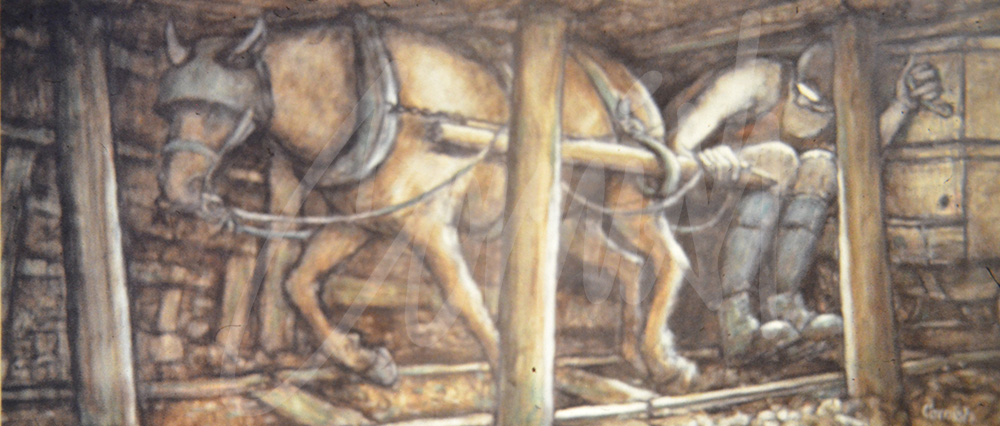
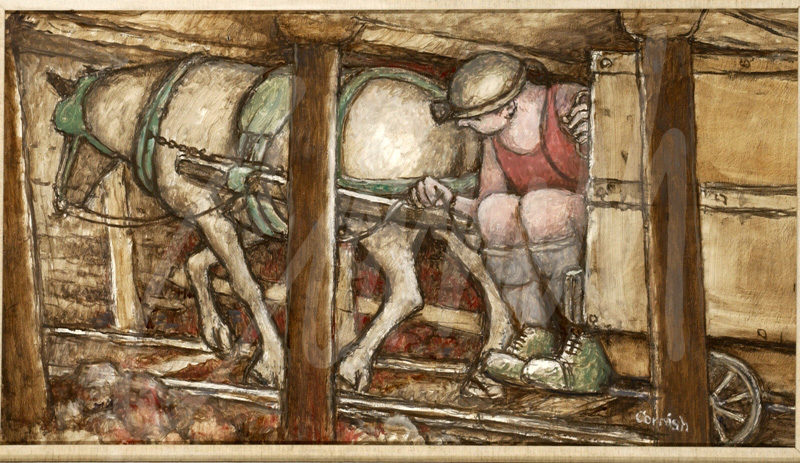
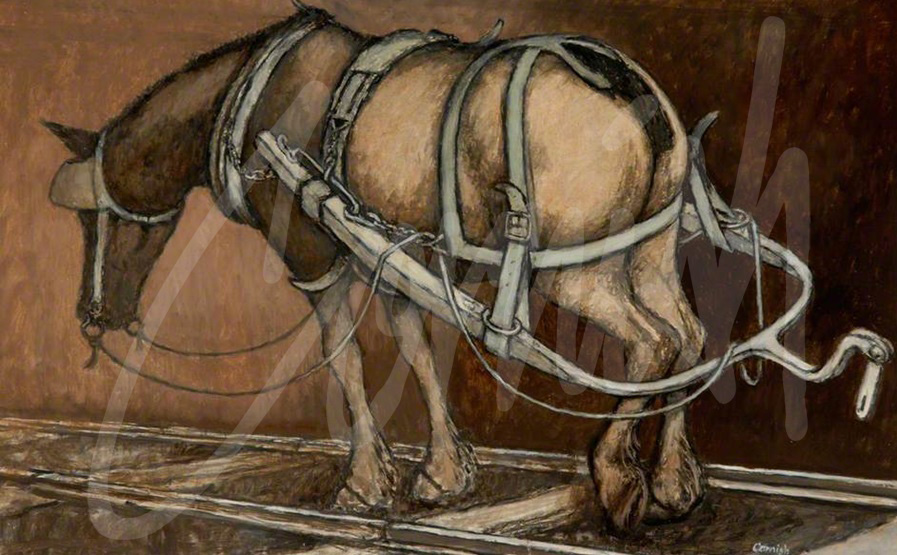
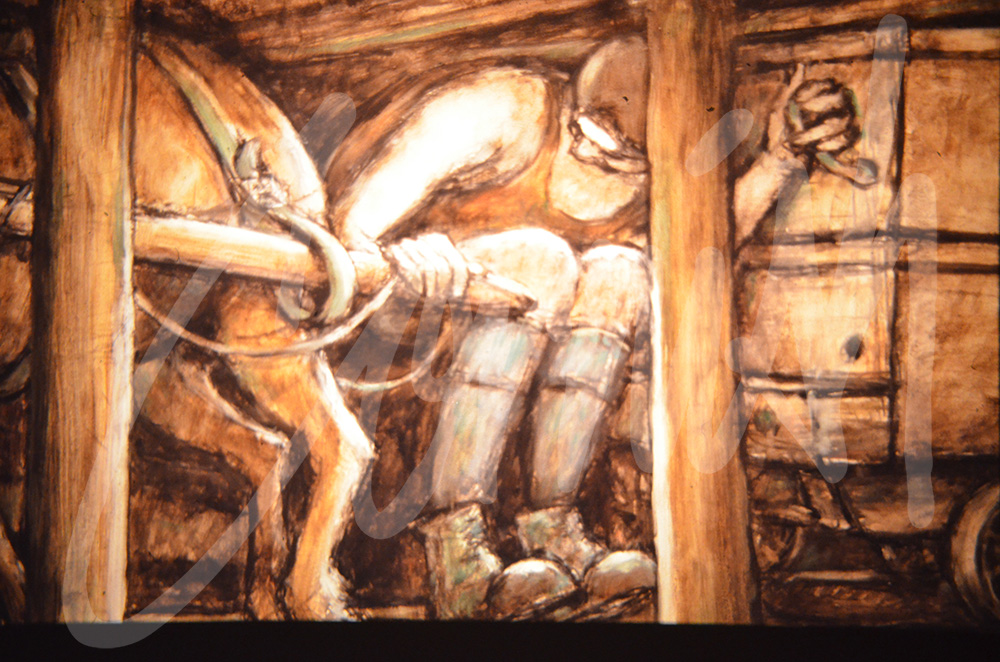
A Slice of Life
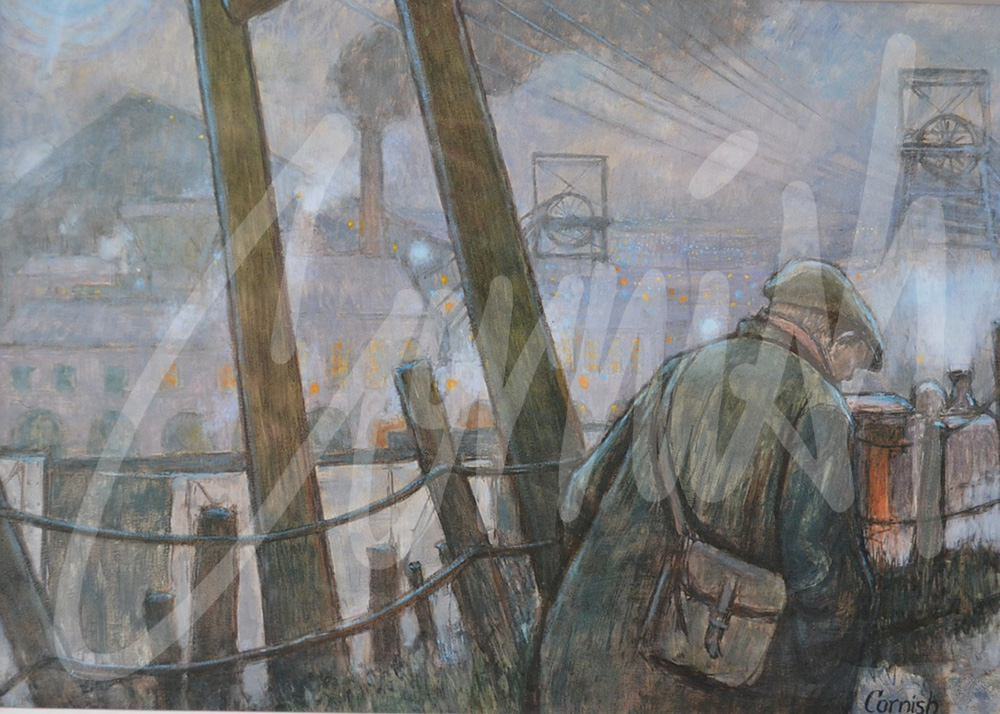
The late 1980s were a period of reflection for Cornish who had become an established professional artist. In his lifetime friends would be intrigued by his anecdotes relating his journey through life and the challenges he had to overcome along the way. Friends would often say ‘why don’t you write these things down?’
One dull day in 1987 when it was too dark to work in his studio he sat down for the first time and began to write his memoirs. The first attempt was abandoned, but as his confidence grew the words flowed from the memories and the book ‘A Slice of Life’ emerged. The title was taken from his concept of all life as a continuum from which he envisaged each individual having his own piece, his own ‘slice’ from the inevitable passage of time.
‘A Slice of Life’ was published by his friend Bill Mallabar who was also a graphic designer. The whole process took two years and the book was published to coincide with his 70th birthday in 1989. Simultaneously the Lord Mayor of Newcastle, Alderman Theresa Russell, introduced Cornish to the Director of the Polytechnic Gallery which later became The University of Northumbria Gallery. A new exhibition was planned to celebrate his 70th birthday and this also marked the beginning of a long and successful relationship with the University Gallery until it closed in 2015.
In 1991 Bill Mallabar donated a Cornish painting, ‘Pit Road with Telegraph Poles and Lights’ to the University Gallery as a tribute to his mother who had died during the previous year. This generous gift was the inception of The Permanent Collection at Northumbria University and further details may be found at normancornish.com/partners
‘A Slice of Life’ quickly sold out and it was re-issued in 2006 and 2015 but without most of the original images. In 2021 John and Dorothy Cornish started the long and arduous task of creating a facsimile edition of the original autobiography published 33 years ago. There were many technical challenges moving from traditional printing processes to modern technology.
Norman Cornish described his original efforts as a ‘labour of love’ and similar sentiments have been expressed by John and Dorothy Cornish during the past 12 months.
‘A Slice of Life’ will be published on October 3rd and will be available to purchase at https://normancornish.com/shop/books priced £17 and also in selected independent bookshops from mid- October.
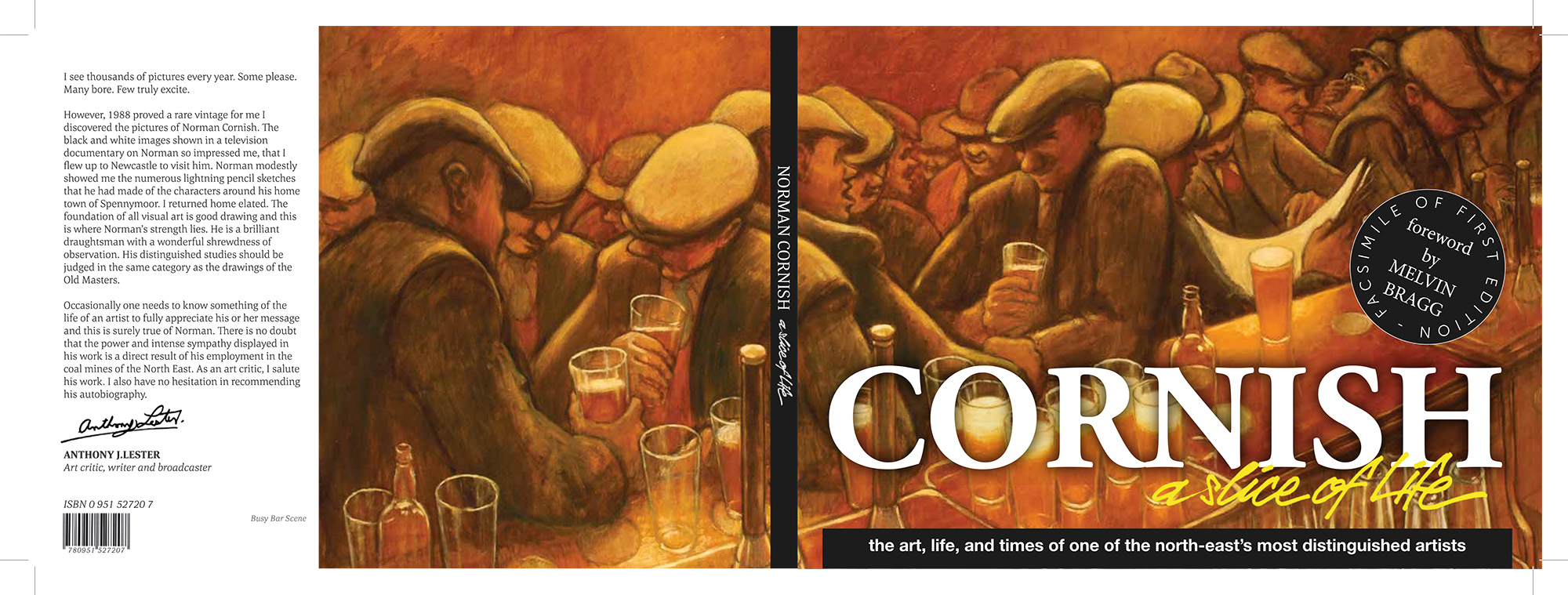
The Local Collieries
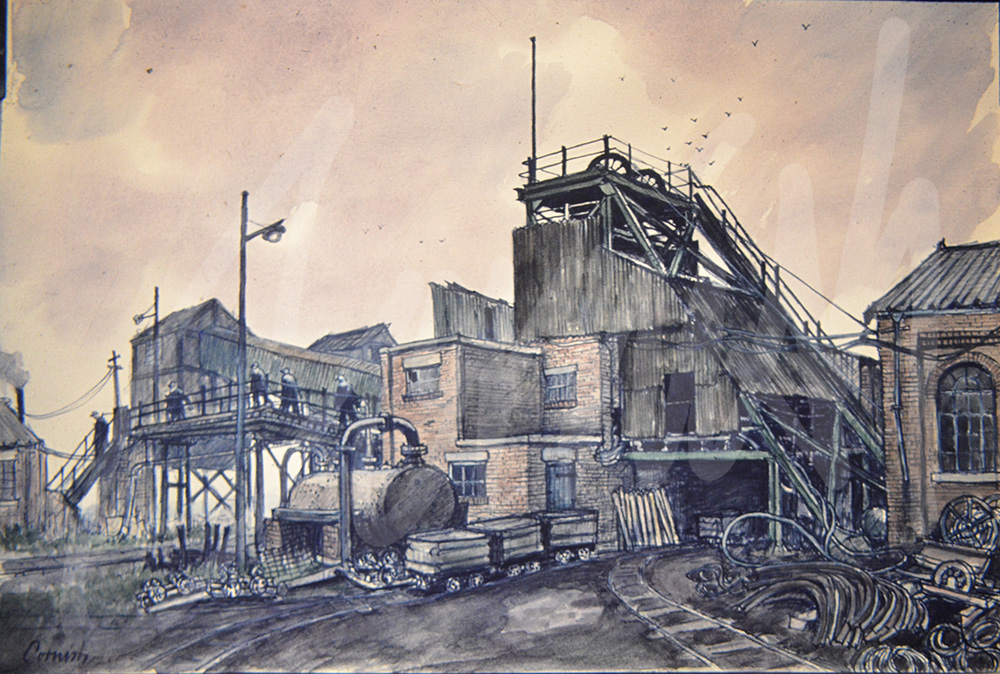
In 1919, the year of Cornish’s birth, there were a million coal miners in Great Britain. Almost a quarter of them, some 223,000, worked in the North East of England. In County Durham a large percentage of the workforce was employed directly in mining and related industries. Mining, with its pit heaps, pit head gear and rows of mining cottages, dominated the physical and mental landscape of the county. Within a five miles radius of Dean and Chapter Colliery there were over a 135 ‘collieries and pits,’ including brickworks, quarries and coking plants at varying times.
It was hardly surprising that the immediate environment was to make a crucial impact on his early responses as an artist. The smoke and sounds of the railway engines hissing, coal trucks, colliery buzzers, miners’ boots on the gantry steps and the daily ‘knockers up’ combined to create an industrial cacophony. The impact upon the environment and the men was pervasive.
Cornish started work at Dean and Chapter Colliery on Boxing Day 1933, aged 14, where there were 2,135 men and boys working underground and 538 working above ground. By 1937 the workforce was producing 3,000 tons of coal per day- a third of it machine mined and the rest hand hewn. The pit was referred to as ‘the Butcher’s shop’ and accidents, including fatalities, were frequent.
He worked at the Dean and Chapter colliery until 1962 when he was transferred to Mainsforth where he was commissioned by Durham County Council to paint the mural for the new County Hall. He was later transferred to Tudhoe Mill Drift (whose banner he had designed), a much safer pit where he worked for two and a half years. Cornish’s final pit was Tudhoe Park Drift where conditions were very wet and his increasing lower back pain from working underground for over thirty years was the final straw!
Following persuasion from his wife Sarah, and constant pressure from the owners of the Stone Gallery in Newcastle, he decided to become a full time professional artist. To associate Cornish exclusively with his depiction of life in mining communities devalues his vast skill and achievements as a leading artist of the 20th century whose work may be found in public and private collections throughout the UK and beyond.
In the early days of his career as an artist there was an inevitability that the pits where he worked and some others in the surrounding area would eventually feature as part of the social record of his life and times.
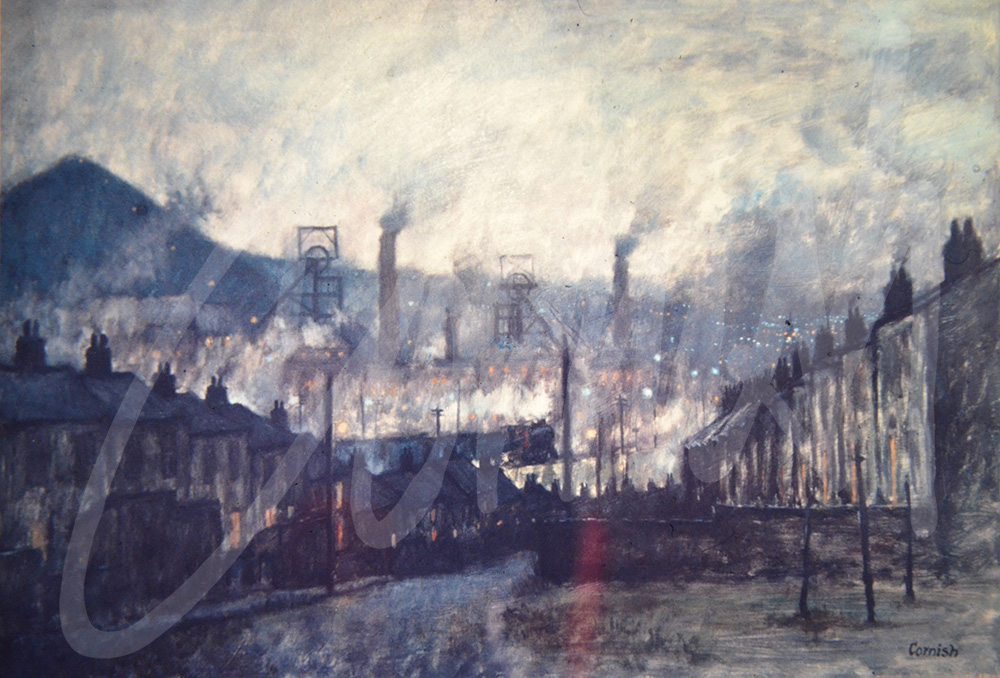
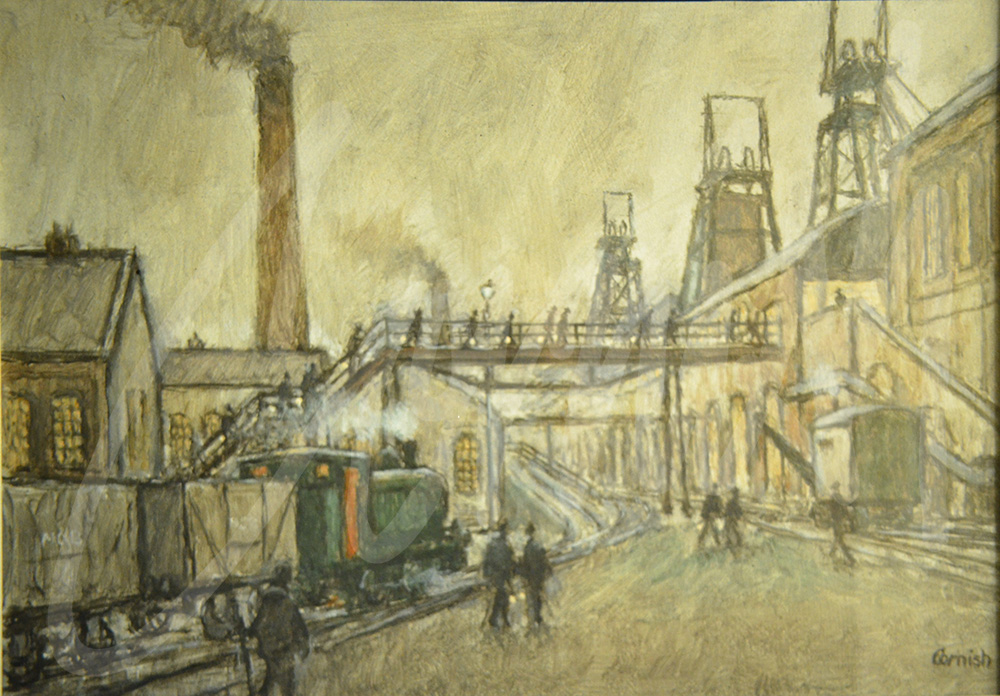
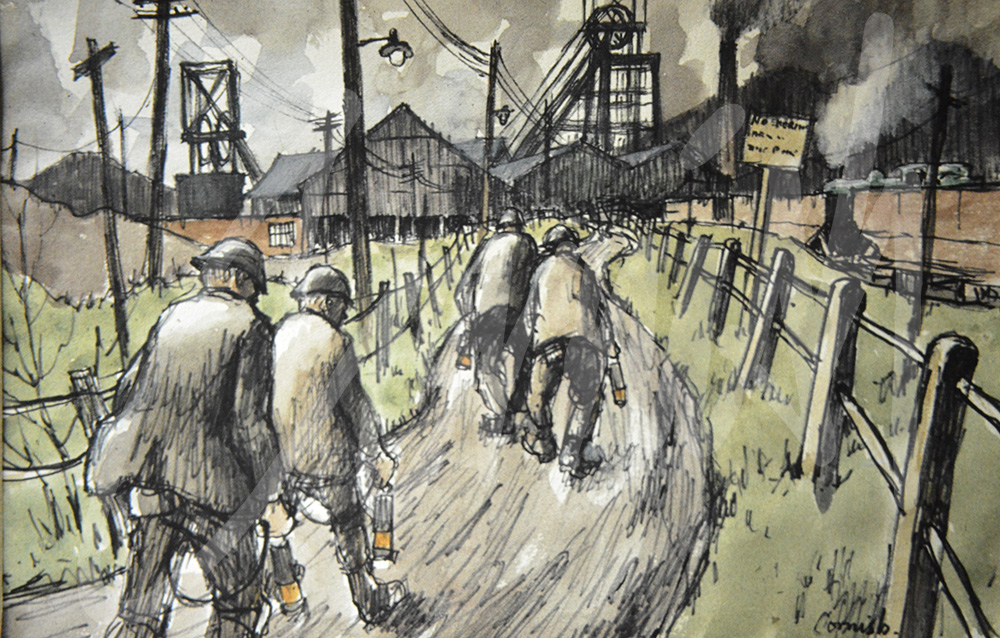
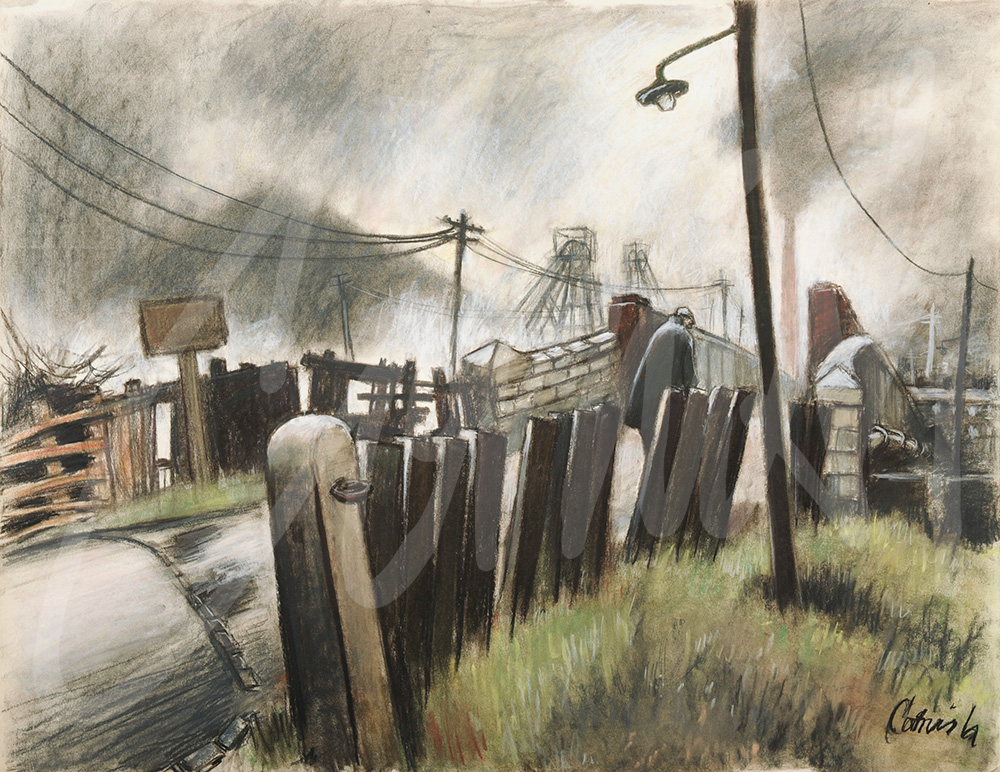
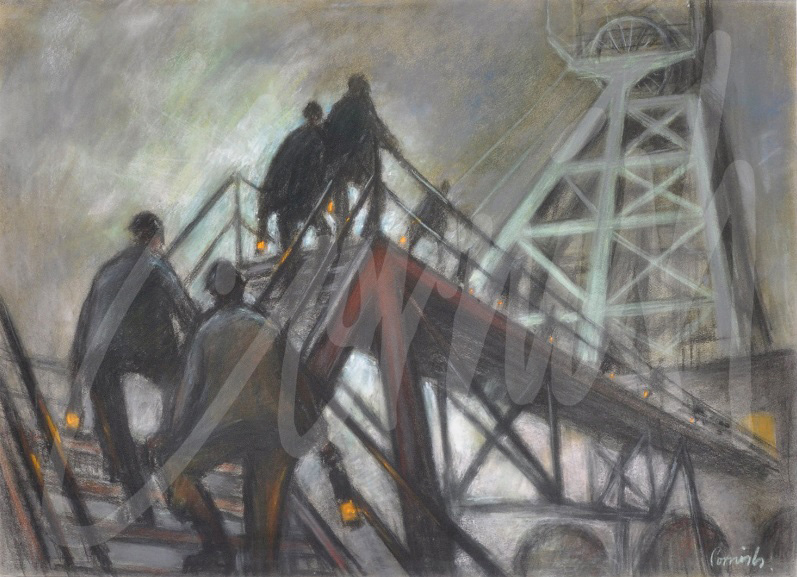
More Articles...
- A Bedroom Studio
- Realism to Abstraction
- ‘Behind The Scenes: The Norman Cornish Centenary’ lecture 1919-2019
- Behind The Scenes: The Norman Cornish Sketchbooks at Scarth Hall
- The Unseen Works - ‘Did you know?’
- Grandma and the Proggy Mat
- A Durham Townscape circa 1950
- Observations of People
- Beyond the Pit Road
- Darning Socks and Courting


